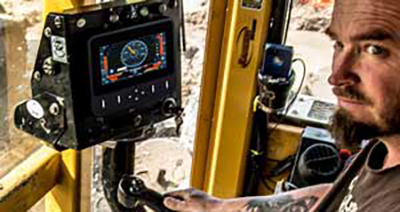Five steps for designing an effective user interface for an operator display
Five steps for designing an effective user interface for an operator display
 Overview
Overview
HED is an industry leader with over 30 years designing and manufacturing innovative displays for on and off highway OEMs. In today's world, mobile devices have become an integral part of our lives, and we rely on them for most of our daily tasks. The same is true for vehicle operators in the markets we serve such as construction, military, emergency, and mining. The user interface of these devices in such demanding environments plays a key role in performance, efficiency, safety, and productivity. Below are five steps to consider when designing your user interface.
- Understand the user: The first step is to understand the user's needs and requirements. This involves identifying the tasks that the operator will perform, the information that they need to access, and their level of expertise.
- Define the user interface requirements: Once you have a clear understanding of the user's needs, you need to define the requirements for the user interface. This includes the layout, color scheme, font size, and other visual elements – these should be chosen carefully to ensure that they are easy to read and understand.
- Design the layout: The next step is to design the layout of the user interface. This involves organizing the information in a logical and intuitive manner, so that the operator can easily access the information they need.
- Test the user interface: Once the user interface has been designed, it should be tested to ensure that it meets the user's needs and is easy to use. This can be done through operator testing or usability testing.
- Iterate and improve: Finally, the user interface should be iterated and improved based on feedback from operators. This may involve making changes to the layout, visual elements, or functionality to improve the user experience.
HED can help you consolidate your vehicle’s controls and gauges into one place with our CAN bus displays. Made for harsh environments, our displays can be mounted in the cab or outside your vehicle. We offer customized screen designs and maximum functionality with our do-it-yourself programming software or our dedicated engineering team. Connect with us today to discuss your next project.



